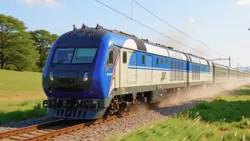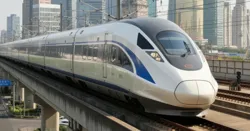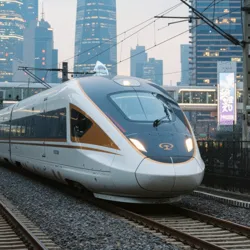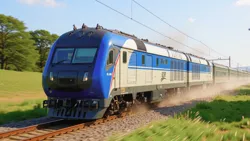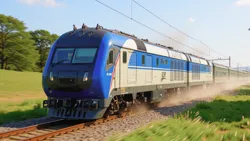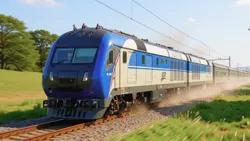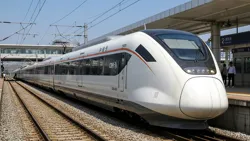Shanghai to Furongzhen Trains
1 Passenger
Date
Add return
Shanghai to Furongzhen High-Speed Rail Overview
The high-speed rail Shanghai to Furongzhen route connects Shanghai with western Hunan on CRH G and D trains (bullet train). Covering about 1,250 km (777 miles), the journey takes as little as 6 hr 45 min with one transfer, reaching speeds up to 350 km/h (217 mph). Trains depart from Shanghai Hongqiao and arrive at Furong Town (Furongzhen) Station. The first departures are at 6:00 AM, and the last departures for same-day arrival leave around 6:30 PM, with 20–30 daily departures. Common transfer points include Changsha South and Huaihua South, with key stations en route such as Hangzhou East and Nanchang West. Second-class tickets start from approximately CNY 750 (USD 105). Book your trip online with Rail Monsters.
Buy Train Tickets
All Routes. All Your Needs. Premium Benefits
Shanghai to Furongzhen Train Map
Plan your trip between Shanghai and city Furongzhen in China on the Shanghai–Kunming High-Speed Railway, connecting to the Zhangjiajie–Jishou–Huaihua HSR. The route passes key stations like Shanghai Hongqiao, Hangzhou East, Nanchang West, Changsha South, Huaihua South, and Jishou East. Expect views of Hangzhou Bay, Zhejiang tea hills, Wuyi ranges near Shangrao, Poyang Lake by Nanchang, and the Wuling Mountains before Furong Town. CRH G-series transport enables direct high-speed travel across this corridor.
Shanghai to Furongzhen Train
China Railway high-speed services on the Shanghai to Furongzhen route generally offer Second Class, First Class, and—on many G-series runs—Business Class seating (Economy, Premium Economy, and Premium). All seats are reserved and air‑conditioned, with clear onboard announcements in Chinese and often English.
The fastest option combines a G-series Fuxing train from Shanghai Hongqiao to Changsha South or Huaihua South at up to 350 km/h (217 mph) on the Shanghai–Kunming high-speed corridor, then a high-speed hop on the Zhangjiajie–Jishou–Huaihua line to Furongzhen, where trains typically run at 250–300 km/h (155–186 mph). With good connections and limited stops at major hubs such as Hangzhou East and Nanchang West (or via Nanjing South and Wuhan on alternative routings), the end-to-end journey is usually about 6 to 8 hours, depending on the transfer point and dwell times.
In comparison, a lower-fare itinerary pairs an overnight conventional service (Z/T/K series) from Shanghai Railway Station to Jishou or Huaihua—top speeds 120–160 km/h (75–99 mph)—with a short high-speed segment to Furongzhen (around 15–45 minutes on the HSR). This option typically takes roughly 13 to 16 hours door to door but offers hard/soft sleeper berths for overnight travel.
High-speed trains (G-series Fuxing such as CR400 variants) include power outlets, tray tables, clean restrooms, and trolley or dining-car service. Business and First Class provide wider seating and more legroom, while Second Class is the most budget-friendly. Conventional overnight trains offer sleeper compartments and basic catering but make more stops and run significantly slower than high-speed services.
Search. Book. Travel.
With our free app, train booking is easy and rewards add up fast. Every ticket you book brings you closer to discounts for future trips, so you save even more while exploring the World by Rail.
Travel More, Spend Less.

Mobile
train tickets
train tickets
Travel
inspiration
inspiration
Live journey
updates
updates
Cities at Both Ends
Shanghai, China’s biggest city, blends Art Deco and futuristic skylines; stroll the Bund, Yu Garden, and the Shanghai Museum, rooted in its treaty-port past. From Shanghai Hongqiao Railway Station, the high-speed train takes you to Furongzhen, arriving at Furongzhen Railway Station. In Hunan’s Furong Ancient Town, see Tujia stilt houses and the cliff waterfall into the You River; the town gained fame from the film Hibiscus Town.
FAQ about the Shanghai - Furongzhen Route
How long is the train from Shanghai to Furongzhen?
How to book train tickets from Furongzhen to Shanghai?
How much is the train from Shanghai to Furongzhen?
How to buy a train ticket from Shanghai to Furongzhen?
How fast is the train from Furongzhen to Shanghai?
What train to take from Shanghai to Furongzhen?
Buy Your Shanghai to Furongzhen Train Tickets on Rail Monsters
Book train tickets from Shanghai to Furongzhen with Rail Monsters : featuring a 24/7 support team and mobile apps for iOS and Android to buy and manage tickets. We provide flexible bookings and cancellations, along with free class upgrades on several routes for our loyal customers. Compare train ticket prices to find the best deals for your trip.
